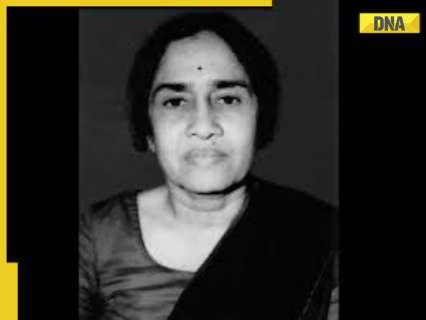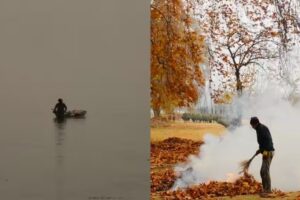
Kamala Sohonie, India’s first woman PhD in science, broke barriers in the 1930s when C.V. Raman denied her entry to IISc. Her courage led to women’s inclusion in Indian science. From pioneering nutrition research on Neera to leading institutions, she redefined equality in academia.
In 1911, in the city of Indore, a girl named Kamala Sohonie was born into a family where science was a way of life. Her father, Narayanarao Bhagvat, and uncle, Madhavrao Bhagvat, were among the first Indians trained at the Indian Institute of Science (IISc) in Bangalore. Yet, despite her scientific heritage, Kamala was about to face the harsh realities of a male-dominated academic world.
From a young age, Kamala was drawn to chemistry, experimenting in her father’s small home laboratory. Her fascination with beakers and bubbling mixtures sparked a passion that would define her life. After excelling at Bombay University, where she topped her class in chemistry in 1933, she dreamed of joining IISc, India’s most prestigious scientific institute.
The IISc Rejection That Sparked a Revolution
Kamala’s application to IISc was rejected by none other than C.V. Raman, India’s Nobel laureate physicist, who believed women were not suited for serious scientific work. The decision did not sit well with her. In a bold move for a young woman in the 1930s, Kamala directly confronted Raman and demanded an explanation.
Her courage led to a compromise; she was granted admission ‘on probation,’ forced to work under restrictive conditions and prove her capability. Kamala accepted the challenge. Her brilliance shone through, and within a year, her outstanding research forced IISc to revoke its gender barrier, allowing women full access to its programs.
From IISc to Cambridge: Breaking Global Barriers
In 1937, Kamala earned a scholarship to Cambridge University, where she conducted pioneering research under Derek Richter on enzymes like Cytochrome C, vital for understanding cellular respiration. Two years later, she became the first Indian woman to earn a PhD in science, a milestone that broke global boundaries for Indian women.
Research for the People: The Neera Revolution
Returning to India, Kamala turned her attention to public health. At the Nutrition Research Laboratory in Coonoor, she studied Neera, a sweet extract from palm trees and discovered its rich nutritional content, especially iron and vitamin C. Her findings influenced early nutrition programs in independent India, laying the groundwork for initiatives like the Midday Meal Scheme.
Why didn’t she win Nobel Peace Prize
Kamala Sohonie didn’t win the Nobel Prize, not because she lacked brilliance, but because the system she lived in wasn’t designed to recognize women, Indians or socially driven science. Her legacy isn’t in medals or ceremonies, but in the doors she opened and the generations of women scientists she inspired.
The Legacy of a Trailblazer
Kamala’s quiet determination transformed Indian science. As Director of the Royal Institute of Science, Mumbai, she championed equal opportunities for women in research and education. She rejected labels like ‘first woman scientist,’ emphasizing that her fight was not for recognition but for equality.
When Kamala Sohonie passed away in 1998, she left behind no statues or institutions bearing her name, but her legacy lived on through every woman who dared to enter a laboratory without apology. She opened doors that had long been closed, proving that brilliance knows no gender.
Her story remains a reminder that progress often begins with one voice saying, ‘Let me in.’





